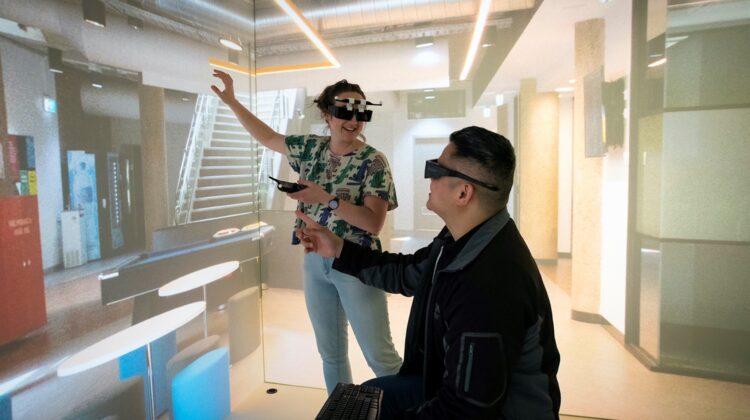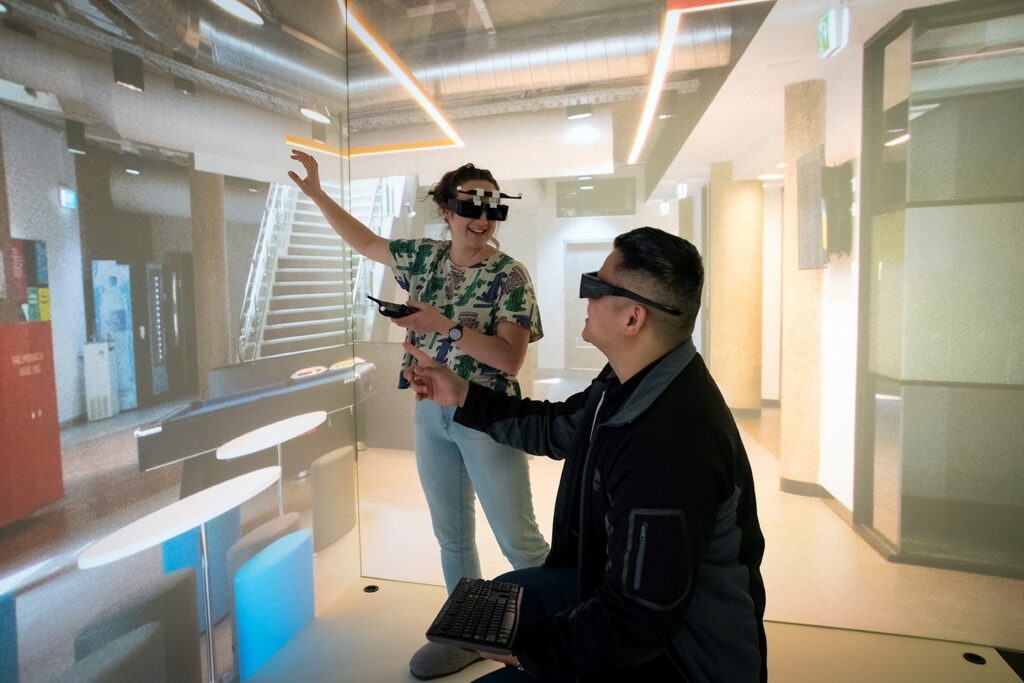
Having met Isabella Bower while she was a research associate with the research team LEaRN we have been following her own research about how buildings affect our emotion.
So we asked her to share insights from her research examining how design characteristics of buildings modulate neural networks involved in emotion regulation. Isabella’s work explores what work has been done in this field and tests a novel framework for measuring neurophysiological impact from exposure to a design element in an enclosed interior space.
We start with a fundamental question from Isabella…
Do the buildings we create and spend a significant proportion of our lives within, contribute to changes in our emotional state and affect our overall psychological wellbeing?
It’s a question we don’t yet know the answer to but is a critical area of research with the potential to improve our health and increase productivity, both of which could lead to significant financial gains.
“Although design practitioners and researchers have long argued that the places we inhabit, whether urban landscapes, buildings or natural environments, directly affect our behaviour, we are still yet to objectively determine the effect of these physical contexts on emotion.”
Currently, there are no robust models for us to evaluate how built environment design impacts our emotional states. [1] In 2019 I published a systematic literature review to draw together evidence of the impact building interiors have on human emotion. The review analysed 237 records and found 7 studies where researchers had used a combination of autonomic nervous system (ANS) and/or central nervous system (CNS) activity with self-reporting as a method to determine emotional response.
The studies reported findings that included how design characteristics such as room geometry, ceiling height and enclosure, furnishing styles and materiality impacted brain activity, heart rate and sweat response as well as self-reported change in emotion. However, the key finding of the review was that there are limitations in the current studies. These include having no agreed strategy or experimental approach to measuring how exposure to the built environment impacts our emotional states; underpowered participant pools with little age variation in participants; and inconsistent data reporting and analysis with strong reliance on the use of statistics to separate multivariate data. This suggests we need clearer experimental designs and reported comprehensive methods for reproducibility.
“In order to progress the field, a rigorous protocol that reports the comfort parameters of the controlled experimental environment is needed before we establish the effect of visual design variables on emotion in interior built environments.”
As a result of the limited knowledge we have, in October 2019 I collected data from over 60 participants to investigate how design characteristics of the built environment affects emotional and neurophysiological responses in a context neutral setting.
Brain cells communicate through small electrical signals. Isabella used a technique known as electroencephalography (or EEG for short) where electrodes are placed on the outside scalp to detect and record brain waves. (Photo: Donna Squire, Deakin University)
Measuring users emotional responses via their brain activity…

Specifically, I explored if scale (i.e., the perceived size of a built environment) modulates an autonomic and/or conscious emotional response. A key feature of my research is reporting and keeping consistent Indoor Environmental Qualities (temperature, lighting, acoustics etc.) to ensure ‘comfort’ is separated from the effect design variables such as colour, form, texture and scale have on our emotions.
New virtual reality tools to explore with…
Through the use of a Cave Automatic Virtual Environment I was able to create conditions in a controlled environment while using electroencephalography to measure brain waves and other sensors to measure heart rate variability and sweat response.

The results of this work will be made publicly available this year and presented virtually at the Academy of Neuroscience for Architecture Conference in September 2020. It is hoped the study will provide a framework for developing future research in this field and furthering our understanding on the possibilities of measuring how the design of buildings affect us.
This is a fascinating project for us in the acoustics world as it really challenges us to think more holistically and to better connect; neuroscience, engineering and the built environment. It can only be good to have a better understanding around how to support people, reduce potential anxieties and be in their best emotional state as to be more effective in workplaces, schools and hospitals.
Isabella Bower is a PhD candidate with the School of Architecture and the Cognitive Neuroscience Unit at Deakin University, Victoria, Australia.
Watch Isabella’s Three Minute Thesis presentation about her research below.
You can watch this short film “How do buildings affect your emotion?” Deakin research study by Isabella
here.
For more information about this project you can visit Architecture with Feeling or contact Isabella Bower here.
1. Bower, I., Tucker, R., & Enticott, P. G. (2019). Impact of built environment design on emotion measured via neurophysiological correlates and subjective indicators: A systematic review. Journal of Environmental Psychology, 66, 101344. https://doi.org/10.1016/j.jenvp.2019.101344

